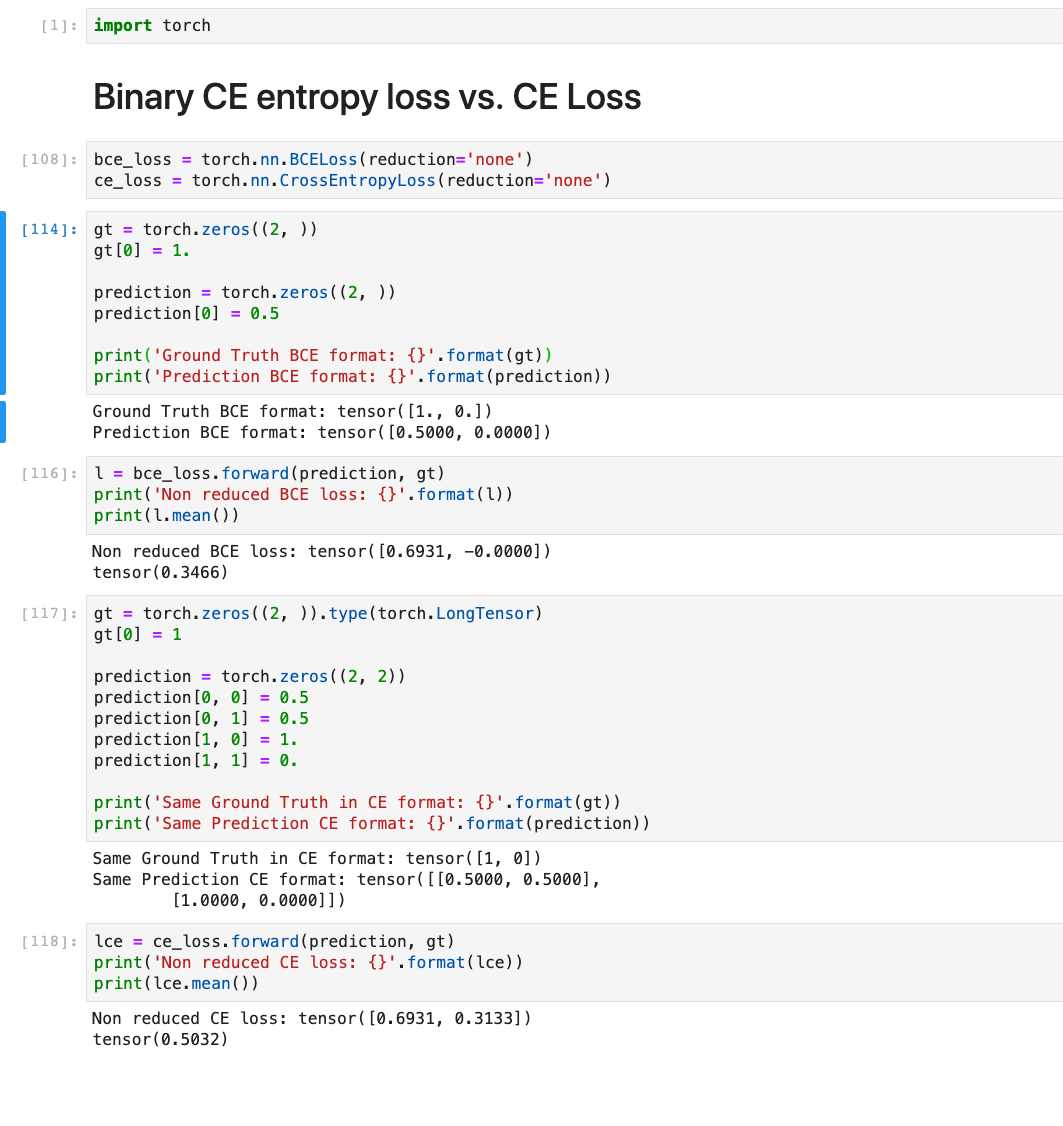
To summarize, cross-entropy loss is a popular loss function in deep learning and is very effective for classification tasks. Line 24: Finally, we print the manually computed loss.

Line 21: We compute the cross-entropy loss manually by taking the negative log of the softmax probabilities for the target class indices, averaging over all samples, and negating the result. Line 18: We also print the computed softmax probabilities. Line 15: We compute the softmax probabilities manually passing the input_data and dim=1 which means that the function will apply the softmax function along the second dimension of the input_data tensor. The labels argument is the true label for the corresponding input data. The input_data argument is the predicted output of the model, which could be the output of the final layer before applying a softmax activation function.

Line 9: The TF.cross_entropy() function takes two arguments: input_data and labels. The tensor is of type LongTensor, which means that it contains integer values of 64-bit precision. Line 6: We create a tensor called labels using the PyTorch library. Line 5: We define some sample input data and labels with the input data having 4 samples and 10 classes. The error message seems to think that I am giving a 2d vector, but I gave it a 3d vector, the 128 size dimension is missing.Line 2: We also import torch.nn.functional with an alias TF. ValueError: Expected target size (32, 3), got torch.Size()Īs far as I can tell, I am doing everything right regarding setting up the dimensions. > 2273 raise ValueError('Expected target size '.format( opt/conda/lib/python3.8/site-packages/torch/nn/functional.py in nll_loss(input, target, weight, size_average, ignore_index, reduce, reduction)Ģ272 if target.size() != input.size(): > 2468 return nll_loss(log_softmax(input, 1), target, weight, None, ignore_index, None, reduction) opt/conda/lib/python3.8/site-packages/torch/nn/functional.py in cross_entropy(input, target, weight, size_average, ignore_index, reduce, reduction)Ģ466 if size_average is not None or reduce is not None:Ģ467 reduction = _Reduction.legacy_get_string(size_average, reduce) > 961 return F.cross_entropy(input, target, weight=self.weight,ĩ62 ignore_index=self.ignore_index, reduction=self.reduction) opt/conda/lib/python3.8/site-packages/torch/nn/modules/loss.py in forward(self, input, target)ĩ60 def forward(self, input: Tensor, target: Tensor) -> Tensor: > 727 result = self.forward(*input, **kwargs)


opt/conda/lib/python3.8/site-packages/torch/nn/modules/module.py in _call_impl(self, *input, **kwargs)ħ25 result = self._slow_forward(*input, **kwargs) ValueError Traceback (most recent call last) Loss = nn.CrossEntropyLoss(ignore_index=0) Target = torch.empty(3, dtype=torch.long).random_(5)īut for a 2d tensor, I am getting an error import torch.nn as nn Input = torch.randn(3, 5, requires_grad=True) Target: (N) where each value is 0 ≤ targets ≤ C−1Īnd this is the case with the example given for a 2d tensor loss = nn.CrossEntropyLoss() Input: (N, C) where C = number of classes I am following the example here, where the documentation says:


 0 kommentar(er)
0 kommentar(er)
